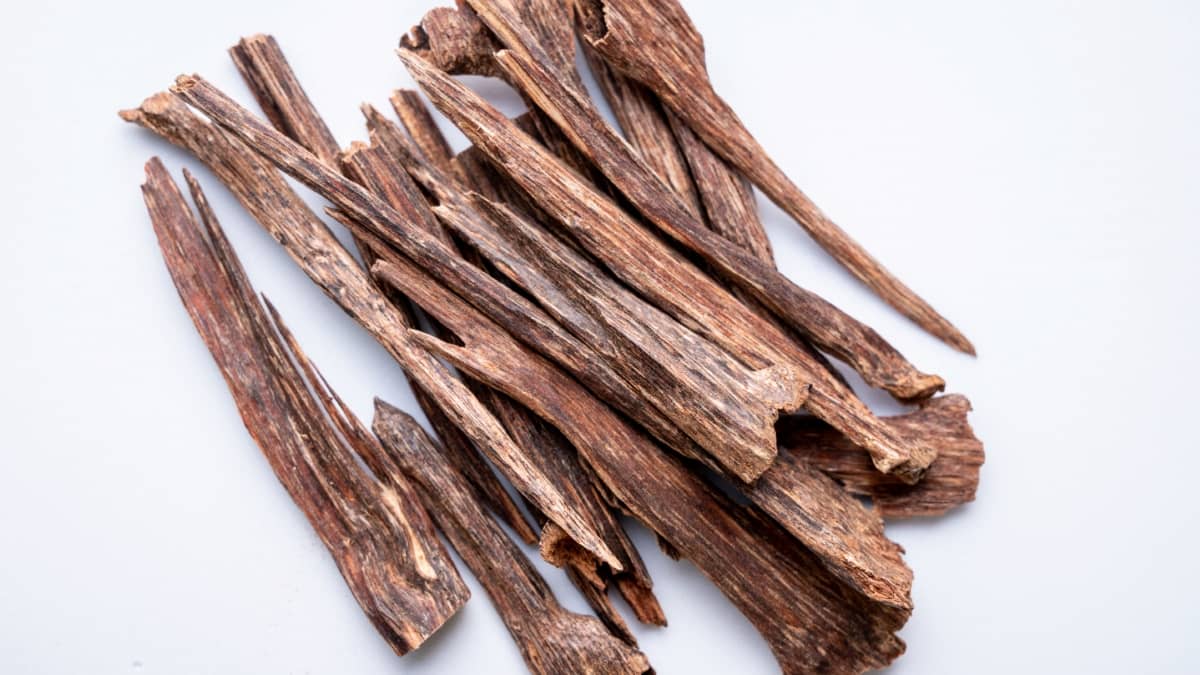Growing Agarwood trees from seeds can be a rewarding and fulfilling experience, not only for their beauty but also for their numerous benefits. Growing Agarwood trees from seeds allows farmers to diversify their income streams. Agarwood cultivation can be profitable as the demand for this fragrant wood continues to rise globally.

How to Grow Agarwood Tree from Seeds
Understand the Uses
This rare and precious wood has been used for centuries in various cultures for its unique fragrance and medicinal properties. In traditional medicine practices, Agarwood is believed to have numerous health benefits. It is said to have anti-inflammatory properties and can be used to treat digestive issues and respiratory problems. Beyond its aromatic qualities, Agarwood holds cultural significance in many countries. Due to its rarity and high demand in industries such as perfumery and traditional medicine, cultivating Agarwood trees can be a profitable venture.
Suitable Soil
Agarwood trees thrive in well-drained soil that is rich in organic matter. This type of soil allows for proper root development and prevents waterlogging, which can be detrimental to the tree’s health. Ideally, the soil pH should be slightly acidic to neutral, ranging from 5.5 to 7.5. Furthermore, regular monitoring of moisture levels is necessary as Agarwood trees require adequate watering without excessive moisture retention in the roots. Selecting suitable soil for Agarwood tree planting is vital to their overall health and productivity.
Prepare the Seeds
To successfully grow Agarwood trees from seeds, properly preparing the seeds for germination is crucial. The first step is to collect healthy seeds from ripe fruits between November and December. These fruits are known for their aromatic resin, which makes them ideal for Agarwood production. Once you have collected the seeds, storing them in a cool place like a refrigerator is essential.
When ready to plant, choose trays with a well-draining soil mix. Place the seeds in these trays at an appropriate depth and cover them gently with soil. At this stage, enlisting the help of tree-growing labor can be beneficial as they have experience handling delicate seedlings. They can assist you in transferring the germinated seeds into nursery bags, where they will continue growing until they are strong enough for transplantation.
Planting Seeds
Collecting healthy seeds from ripe fruits between November and December is essential. These seeds should be stored in the refrigerator before being used for planting. Fill trays with well-draining soil mixed with sand or perlite to plant the Agarwood seeds. Make sure the soil is slightly moist but not waterlogged. Plant the soaked seeds about 1-2 centimeters deep into the soil, leaving enough space between each seed.
In case you missed it: How to Propagate Brussels Sprouts from Seeds: Sprouting Techniques

Once planted, provide adequate sunlight for optimal growth. Watering is also essential for seed germination and subsequent growth. As the seedlings grow, you may need to transfer them into nursery bags filled with nutrient-rich potting mix. This allows their roots to develop further, ensuring enough space for proper growth.
Sunlight and Water
These trees thrive in warm, tropical climates with abundant sunlight. When planting your Agarwood seeds or saplings, choose a location that receives sunlight for 6 to 8 hours daily. To ensure proper watering, it is essential to understand the moisture requirements of Agarwood trees. Overwatering the Agarwood tree can lead to root rot and other diseases, so striking the right balance is crucial. Regular watering is necessary during the early stages of growth when the roots are still developing.
Recommended Spacing
Typically, Agarwood trees can grow up to 25 meters in height with a spread of 10 meters. Therefore, it is advisable to leave sufficient distance between each tree. A general rule of thumb is maintaining a spacing of at least 10-15 meters between individual Agarwood trees. Proper spacing also facilitates effective pest control measures as it allows easy access for inspection and treatment when necessary.
Fertilize Agarwood Trees
Providing the proper nutrients can enhance the quality of Agarwood these valuable trees produce. When it comes to fertilization, it’s essential to choose organic options that are gentle yet effective. Avoid chemical-based fertilizers as they may harm the delicate root system of Agarwood trees.
Compost and well-rotted manure are excellent options for fertilizing Agarwood trees. You can also consider using organic liquid fertilizers or seaweed extracts specially formulated for woody plants like Agarwood trees. These products offer a convenient way to supply essential nutrients directly to your trees’ roots.
Prune Agarwood Trees
It’s best to prune during the dormant season, typically in late winter or early spring. This allows the tree to heal quickly after pruning without expending too much energy on new growth. Start by removing dead or diseased branches. To promote a strong central leader (the main trunk), prune back competing leaders to allow one dominant stem to grow vertically. Regular maintenance pruning throughout the growing season will help maintain shape and density while encouraging flowering and fruiting.
Control Pests and Diseases
Protecting your Agarwood trees from pests and diseases is crucial for healthy growth and maximizing yield. These problems can impact the quality of the Agarwood produced, so it’s essential to take proactive measures to control them. One common pest that affects Agarwood trees is the stem borer. Regularly inspecting and monitoring your trees are necessary to identify any signs of infestation early on.
Another prevalent problem Agarwood growers face is fungal diseases like root rot and leaf blight. To prevent these infections, maintaining proper drainage in your plantation area is vital. Avoid over-watering and ensure good air circulation around the plants. Remember that prevention is key in controlling pests and diseases in Agarwood trees.
When and How to Harvest
Agarwood trees typically reach maturity after 7-10 years of growth, at which point they are ready for harvesting. It’s important not to rush this process, as harvesting too early can result in lower-quality resin. The best time to harvest Agarwood is during the dry season when resin production is at its peak. This usually falls between December and February in most regions.
In case you missed it: How to Plant Artichoke Seeds or Transplants: A Step-By-Step Guide

The traditional method is making incisions on the tree trunk and allowing the resinous sap to flow naturally. These wounds are left open for several weeks or months, allowing the resin to solidify into precious Agarwood chips. However, modern techniques such as mechanical drilling have also been developed to expedite the process while minimizing damage to the tree.
Increasing Agarwood Yield and Quality
On average, yield from a single Agarwood tree is about 5 kg. However, it’s essential to note that this yield may vary depending on several factors, such as age, species, genetics, environmental conditions, and cultivation practices. Here are some tips to help you achieve better yield;
- Choose high-quality seeds: Start with good-quality seeds from reputable suppliers or reliable sources.
- Prepare optimal soil conditions: Agarwood thrives in well-drained soils rich in organic matter. Ensure proper soil preparation before planting.
- Practice regular watering: Maintain appropriate moisture levels regularly, but avoid waterlogging.
- Proper harvesting techniques: Harvesting techniques should not be overlooked when aiming for higher Agarwood yields with superior quality. Harvesting at the right time ensures the resin reaches its peak potency before extraction begins.
In case you missed it: How to Grow Jarrahdale Pumpkins from Seeds: Planting, and Care

Conclusion
Growing Agarwood trees from seeds can be an incredibly rewarding endeavor. Starting with seeds is more cost-effective than buying saplings or mature plants to grow Agarwood trees. By investing in quality Agarwood seeds, you can save money while still reaping the rewards.
- Feed Your Flock for Less: Top 10 Tips to Save on Chicken Feed
- Ultimate Guide to Ossabaw Island Hog: Breeding, Raising, Diet, and Care
- Hatching Answers: The Top 10 Reasons Your Chickens Aren’t Laying Eggs
- Eggs and Economics: Breaking Down the Cost of Raising Backyard Chickens
- Defend Your Greens: Proven Methods to Keep Iguanas Out of Your Garden
- Ultimate Guide to Cinnamon Queen Chicken: A Comprehensive Guide for Beginners
- Ultimate Guide to California Tan Chicken: Breeding, Raising, Diet, Egg-Production and Care
- Ultimate Guide to Marsh Daisy Chicken: Breeding, Raising, Diet, and Care
- 10 Types of Chicken Farming Businesses You Can Start for Profits